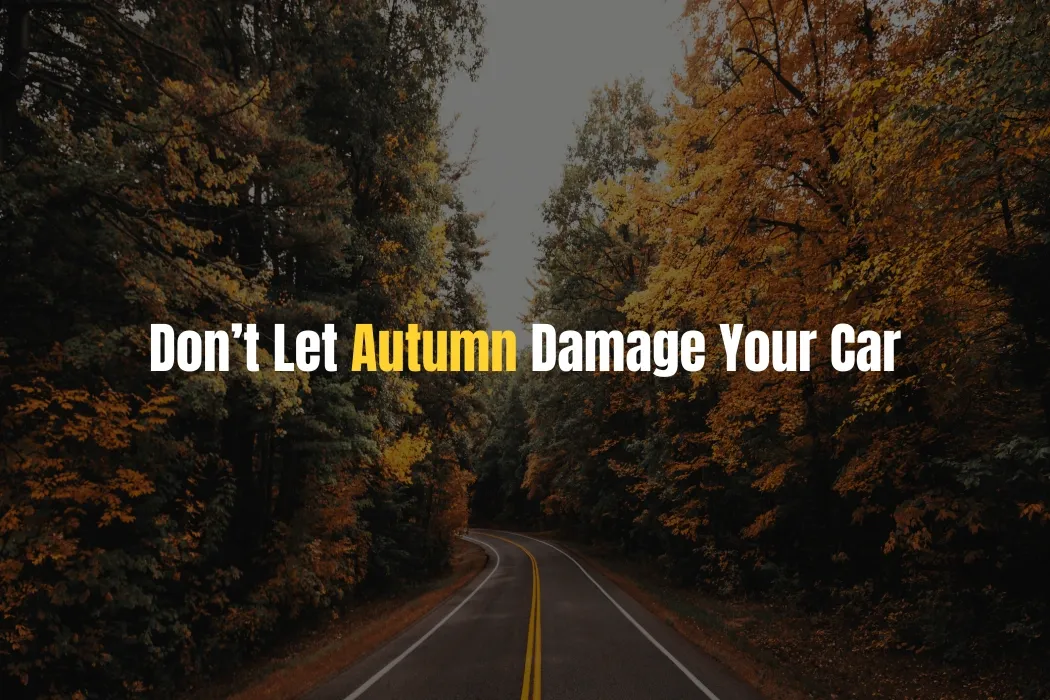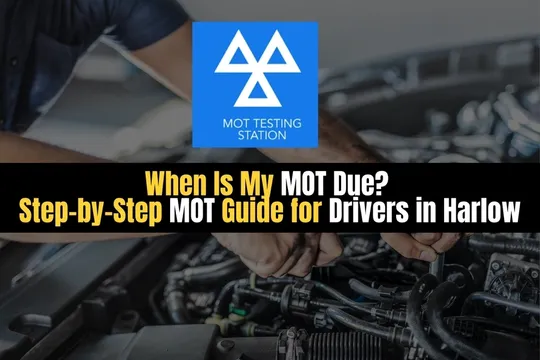Auto Expert Advice
Unlock Your Car’s Potential: Driving & Vehicle Guides from AutoNet VIP Garage
Welcome to AutoNet VIP Garage’s Driving & Vehicle Guides – your definitive source for expert automotive knowledge tailored for UK car owners. From essential vehicle maintenance schedules to practical driving safety tips and insights into automotive technology, our guides are crafted by our skilled team at your trusted Harlow garage. We empower you to make informed decisions about your car’s health, understand common car.
Safe Driving, Freedom to Travel
If you’ve ever owned a car through the change from summer to autumn, you’ll know it’s not just about swapping sunglasses for a raincoat — your car feels the shift too.
After months of blazing sunshine, long motorway runs, and maybe a summer holiday road trip or two, your car has been under constant stress. Autumn comes in with crisp mornings, unpredictable rain, fallen leaves, and shorter days — and if you’re not prepared, this season can reveal every weakness your vehicle picked up over the summer.
Why Autumn Hits Cars Differently – Here’s Autumn Car Care from AutoNet VIP
Think about it: summer heat expands everything — fluids, tyres, even metal components. As autumn mornings get colder, those same parts contract. That change in pressure can throw off tyre inflation, strain your battery, and even cause small leaks in seals that were fine a month ago.
The roads also change. Wet leaves can be as slippery as ice, and that’s before early frosts start showing up. Add darker evenings, and suddenly your lights and brakes are doing more work than they did all summer.
And don’t forget your battery — after a summer of blasting air-con and charging devices on road trips, it’s already been working hard. Autumn’s chilly starts are the perfect storm for a weak battery to finally give up.
At AutoNet VIP, we don’t just fix cars — we build trust. Every vehicle we service reflects our 40+ years of dedication to quality, reliability, and honest care.
Lucian
Owner
What to Look Out For — By Vehicle Type Electric Vehicles (EVs)
If you drive an EV, you’ve probably noticed range changes as soon as temperatures drop. Cold slows down the chemical reactions in your battery, meaning you won’t get as many miles per charge. Autumn is the time to get into the habit of pre-heating your car while it’s plugged in, so you’re using mains power instead of draining the battery. Keep your charging cables clean and dry, and check for any software updates that improve cold-weather efficiency.
Why it matters: EV batteries are like people — they don’t love the cold. When the temperature drops, chemical reactions inside the battery slow down, meaning less driving range.
Checklist:
- Battery Pre-Conditioning – Heat or cool your EV while it’s still plugged in before driving. This uses mains power instead of draining the battery.
- Full Charge Before Long Trips – Cold weather drains range faster. Start fully charged to avoid mid-journey charging stress.
- Check Charging Cables & Ports – Moisture and dirt can cause poor charging or even faults. Keep them dry and clean.
- Software Updates – Many EVs have updates that improve efficiency in cold weather. Check with your dealer or manufacturer app.
- Tyre Pressure – Cold weather reduces pressure, affecting grip and range.
- First Aid Tip: If your EV shows sudden, extreme range loss in autumn, check tyre pressure, cabin heater usage, and whether the battery needs pre-conditioning. If the issue persists, have a specialist run a diagnostic to ensure the battery’s thermal management system is working.
Hybrids
Hybrids are clever, but cooler temps mean your petrol engine kicks in more often — even for short trips. That means both systems (electric and petrol) need to be ready for action. Keep an eye on your battery health, and make sure your fluids, especially coolant and oil, are topped up and winter-grade if needed.
Why it matters: In autumn, your hybrid’s petrol engine will kick in more often to help warm the car and handle cold starts, so both the electric and petrol systems need attention.
Checklist:
- Battery Health Check – Both your main battery and hybrid system battery should be tested before winter.
- Top Up Fluids – Ensure coolant, oil, and brake fluid are at the correct levels.
- Engine Tune-Up – Check spark plugs, filters, and ignition systems for wear.
- Regenerative Braking Check – Make sure regen braking is operating smoothly, as wet roads can affect it.
- Tyres & Suspension – Wet leaves and slippery roads make grip crucial. First Aid Tip: If you notice your hybrid’s fuel economy suddenly drops in autumn, it could be because the petrol engine is running more often. Have both the petrol and electric systems inspected to avoid uneven wear.
Petrol Cars
Petrol engines don’t mind the cold as much, but they still need attention. Cold starts take a bit longer, so the right oil viscosity makes a huge difference. Check your spark plugs and make sure your air filters aren’t clogged — you want smooth combustion, especially when the engine is working harder on frosty mornings.
Petrol Vehicles
Why it matters: Petrol cars tend to handle cold better, but autumn can still cause issues like poor fuel economy, longer warm-ups, and battery strain.
Checklist:
- Oil Change – Use the correct viscosity for cooler temperatures. Thicker oil slows engine performance in cold weather.
- Spark Plug Inspection – Worn plugs can cause hard starts and poor combustion.
- Air Filter Check – A clean filter improves efficiency and reduces strain on the engine.
- Battery Test – Autumn mornings are the warm-up act for winter battery failures.
- Tyres & Brakes – Wet roads + leaves mean your stopping distance can double.
- First Aid Tip: If your petrol engine struggles to start on a chilly autumn morning, check the battery first — most cold-start problems are battery-related, not fuel-related.
Diesel Cars
Diesels are a bit fussier in cold weather. Short trips in autumn can cause your Diesel Particulate Filter (DPF) to clog faster, so try to give it a longer motorway run now and then. Check your glow plugs before it’s freezing out — you don’t want to find out they’re weak on the first frosty start.
Why it matters: Diesel fuel thickens in cold weather, and diesels rely on glow plugs for starting. They’re also prone to DPF (Diesel Particulate Filter) issues in cooler seasons with lots of short trips.
Checklist:
- Glow Plug Check – Weak glow plugs will make cold starts harder. Test before frost sets in.
- Fuel System Clean – Removes water and contaminants that can cause problems when temps drop. DPF Maintenance – If you mainly drive short distances, plan a motorway run or a professional DPF clean.
- Battery & Alternator Check – Diesels use more battery power to start in cold weather.
- Oil & Coolant Top-Up – Make sure they meet autumn/winter specifications.
- First Aid Tip: If your diesel struggles to start or stalls soon after, don’t keep cranking the engine. Check the glow plugs and battery first — forcing a cold start can flood the system and damage components.
Autumn Car Care Checklist (with Real-World Tips)
- Battery – If it’s over 3 years old, get it tested now. A weak one will almost certainly fail once frost hits.
- Tyres – Cold weather can drop pressure by several PSI overnight. Check weekly, not just monthly.
- Brakes – Listen for squeaks and feel for soft pedal travel; damp weather can make problems worse.
- Lights – Autumn means longer nights. Clean the lenses — dirt and fog reduce brightness.
- Fluids – Top up with the right seasonal grade, especially coolant and washer fluid with anti-freeze.
- Wipers – Don’t wait until the first rainy commute to find out they’re streaking badly.
- Underbody Wash – Wet leaves hold moisture and road grime — perfect conditions for rust.
Conclusion
At AutoNet VIP in Harlow, we’re here to help you adapt your car care for the season — with the tools, training, and over 200+ technical qualifications to keep your vehicle ready for whatever autumn roads throw your way.
Call us on 07300 305705
CM20 2HU, Harlow
Safe Driving, Freedom to Travel.



